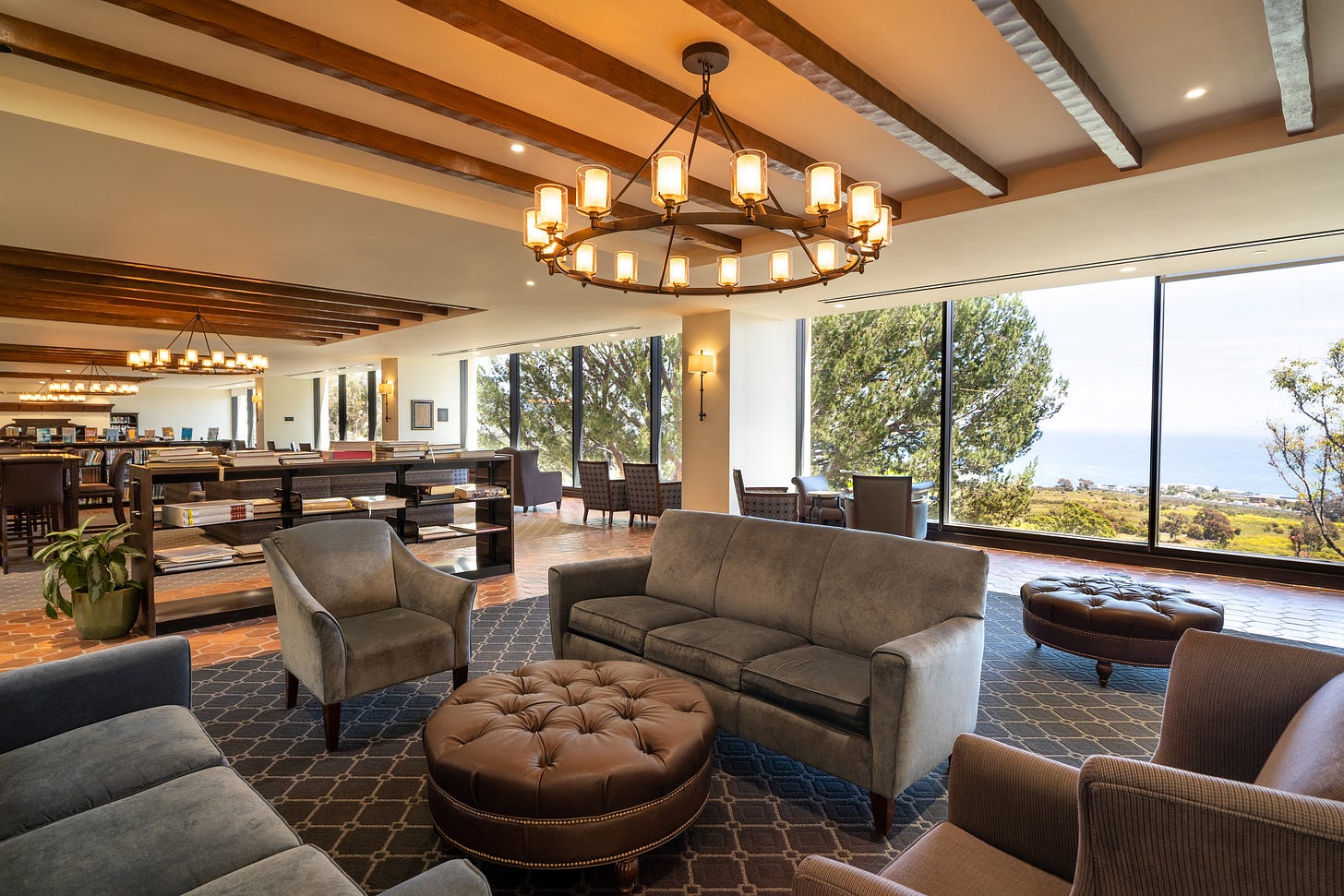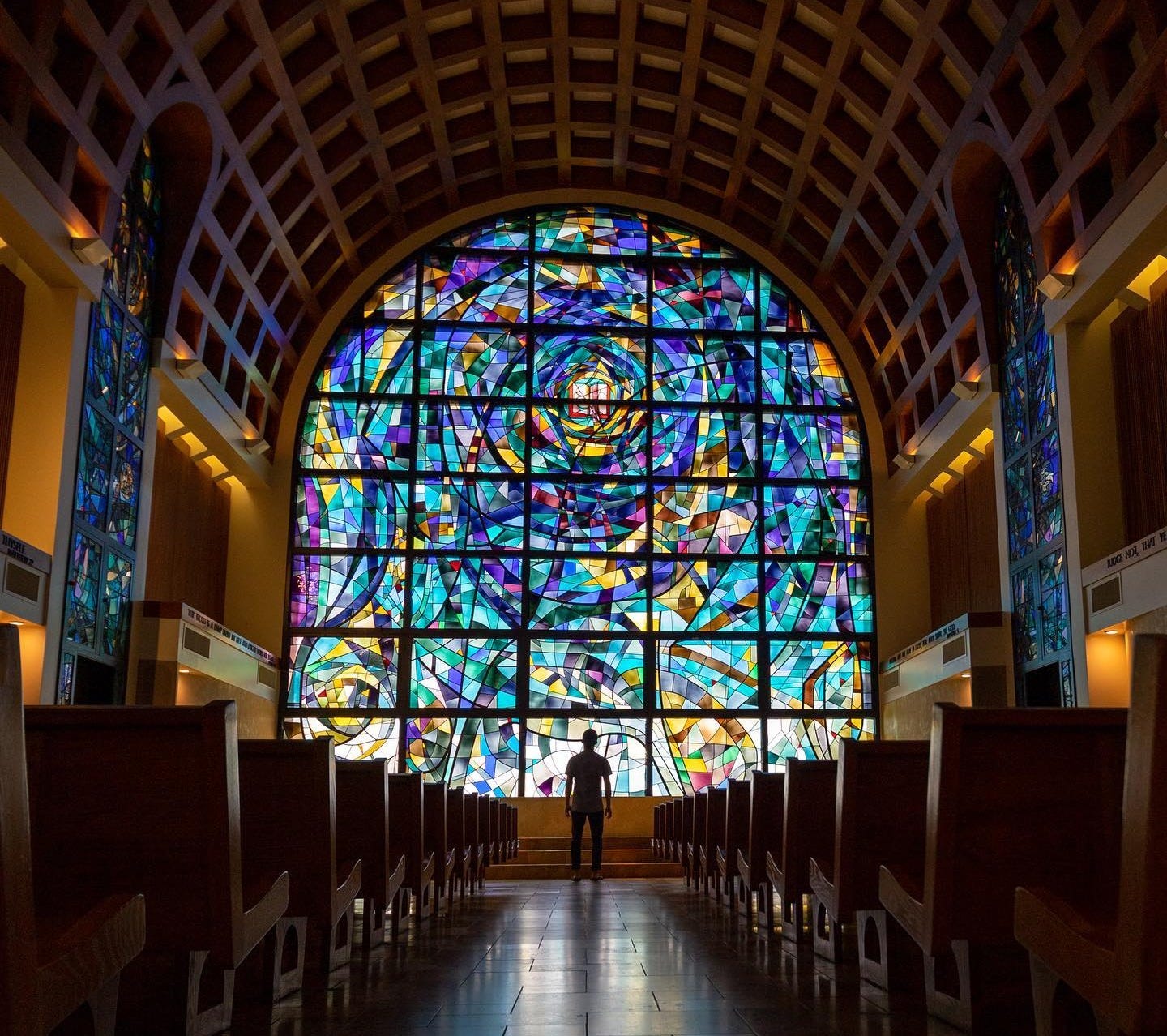Across decades of giving, Blanche Seaver gave hundreds of millions of dollars to Pepperdine University, becoming one of the most generous donors to a single university in the history of American higher education. Despite this distinction, she didn’t like to be called a philanthropist. At the 1975 dedication of Pepperdine’s Seaver College, named for her late husband, Mrs. Seaver featured in a story told by president William S. Banowsky:
Long ago, as a little girl, Blanche was allowed to assist in her father’s paint and supply store. What she relished most was tailor cutting the pieces of glass which were ordered by her father's customers. What she is proudest of is that she never broke even one piece of glass. She was so dependable that she got to use her father’s diamond-point glass cutter. “Bill,” she recently said to me, “please don’t let them call me a philanthropist! I hate that word. I don’t feel the least bit like a philanthropist. I just feel like a little glass cutter.”1
I sometimes wonder what kind of orders the store received that would require young Blanche to break out the glass cutter: custom picture frames, plate glass storefronts, China cabinet doors, lighting fixtures? Or perhaps mostly just home windows. Whatever it was, it seems fitting that Pepperdine was built and endowed in such a large part by a glass cutter because it is a university where windows play an outsized role.
The windows of Pepperdine
When the celebrated architect William Pereira was first designing the Malibu campus in the early 1970s, he took special care to position and orient the major buildings to take advantage of the site’s spectacular views of the Santa Monica Bay. When you’re in one of Pereira’s buildings at Pepperdine, you get the sense that one of the architect’s chief concerns must have been the windows. Whether it’s the dining room of the Tyler Campus Center or the reading room of the Payson Library, there’s no mistaking how window placement is one of the organizing principles of the whole space.

Pereira’s theory of windows was simple: windows are for looking through. Because their glass is transparent, they allow you to see the scene beyond. The window is not to be enjoyed for its own sake but for the sake of the beauty outside. Anything that one of Pereira’s windows does to make you look at the window rather than through it only detracts from its effectiveness. These windows don’t get much praise because when a Pereira window succeeds, you forget about the window entirely—your attention is fixed on the scene beyond the glass.
The most celebrated windows on Pepperdine’s Malibu campus, however, were not designed by Pereira. They are the giant stained-glass windows of the Stauffer Chapel, which were designed by the husband-and-wife team of Robert and Bette Donovan, professional stained-glass artists who took for their theme the Tree of Life. The project was forever regarded as their masterpiece.
The Donovans’ windows are built on a principle that is exactly opposed to that of most other windows at Pepperdine. The glass is translucent but not transparent. Instead of seeing the scene outside by means of the window, light from beyond allows you to see the design of the window itself. To the extent that shadowy figures can be seen moving on the other side of the glass, they only detract from the beauty of the design. The Donovans’ theory of windows was thus the peculiar idea that windows are not for looking through, but for looking at.
To be clear, not every window that draws attention to itself is built according to the Donovans’ theory: some normal windows are chipped or cracked or streaked. Such defects may distract the eye from the view beyond the window, but they aren’t there by design. They’re just poor examples of the Pereira theory—windows that do a bad job of exposing the scene beyond. The test of which theory a given window is employing is whether you are intended to see the scene beyond by means of the window (Pereira) or whether you are intended to see the window by means of light from the scene beyond (Donovan).
Whether you like the Donovans’ Tree of Life or not, you have to admire their boldness. It takes guts to stand on the site of the Stauffer Chapel, gazing out across the bay to Catalina, and to decide that, instead of clear windows framed in celebration of that view, you should instead obscure it with a work of your own creation. If the stained-glass design is to be judged a success, it can only be by improving on the view that would have been offered by a transparent window.
The windows theory of writing
It’s fitting that the icon at the heart of the Donovans’ Tree of Life is an open book, because these two opposite theories of windows also apply to writing. For instance, you might regard prose as a Pereira window (to be looked through) and verse as a Donovan window (to be looked at). But this is probably too simple. After all, you can also write prose to be less than totally transparent, drawing the reader’s attention to surface features of the writing rather than to the topic being written about. I find these competing fenestral theories helpful when I am writing history. When I write, I often say with Blanche Seaver, “I just feel like a little glass cutter.”
The Pereira theory of writing history is focused on exposing to the reader a view of the historical subject itself. The writing is transparent: you can see right through it to the thing being written about, allowing the reader to appreciate the facts of history with a minimum of distractions. Perhaps the scene being exposed is arranged by means of the position or orientation (perspective!) of the window, but the subject itself is natural. Anything the writing does to draw the reader’s attention to the writing (as opposed to the thing being written about) is a defect.
The best exemplar of this style among historians of Pepperdine is David Baird. His writing draws no attention to itself. His focus is always on exposing a view of his subject. The reader’s attention is directed to the facts of history as they exist with the least possible distortion from the intermediating window. Sometimes, you can see other windows out your window. So too, historians like Baird often expose a view that includes the perspectives of other historians as part of the scene.
By contrast, the Donovan theory of writing history is focused on creating a written product that readers find valuable (beautiful? interesting? instructive?) in its own right. Lights from beyond (the facts of history) illuminate the written product and allow us to enjoy it for its own sake. The design of the written product draws attention to itself—to the surface of the writing, as it were—rather than to the facts of history.
Again, not every work of history that draws attention to itself is written according to the Donovan theory: grammatical mistakes or other missteps can draw the reader’s attention to the writing, but not by design. Such faux pas are failures of the Pereira theory. When the Donovan theory fails, it’s because the window itself is not as beautiful as the scene beyond: the writing gets in the way of seeing the facts of history.
Here at Ghost of George Pepperdine, I go through periods of thinking the Pereira theory is obviously right, and I try to make my writing as lucid as possible to avoid distracting from the facts of history. Then, for a while, I succumb to the temptation of the Donovan theory and try to make my writing sparkle in its own right, even if that means obscuring the scene beyond.
Which theory controls in this essay? Well, given that (1) the title is in Late Latin, (2) the entire piece is a single extended metaphor using historical examples to shed light on an unrelated topic, (3) I couldn’t resist using the word fenestral, making you stop and think, “What?!” even if you could deduce its meaning, and (4) we’re now two paragraphs into a conclusion engaging in what I admit is a fair bit of navel-gazing and self-reference, I’d say that the Donovan theory has won out once again. I can only hope that these surface features enhance rather than detract from the impression I’m trying to create of the windows theory of writing.
Banowsky, “A Spirit of Purpose,” 20 Apr. 1975, Box 1, Pepperdine University Speeches collection, Pepperdine University Special Collections and University Archives (SCUA).



Thank you for your excellent meditation on Pepperdine’s fine architecture in its spectacular natural setting. The essay certainly invites more speculation, as I see it (puns intended). Beyond the two ways of seeing you express so well, I wonder if there might be a third—perhaps we can call it the Pauline way of seeing: “For now, we see through a glass darkly.” The point would be that all seeing is mediated. Even the purest pane of glass bends the light, distorts what we see, though we don’t “see” that this is so. Much can be drawn from this insight, not least a little humility, and maybe a spirit of gratitude and devotion as we discern that we can see something, however incomplete it is: “In thy light we see light” (Ps 36:9). Thanks again for illuminating us.